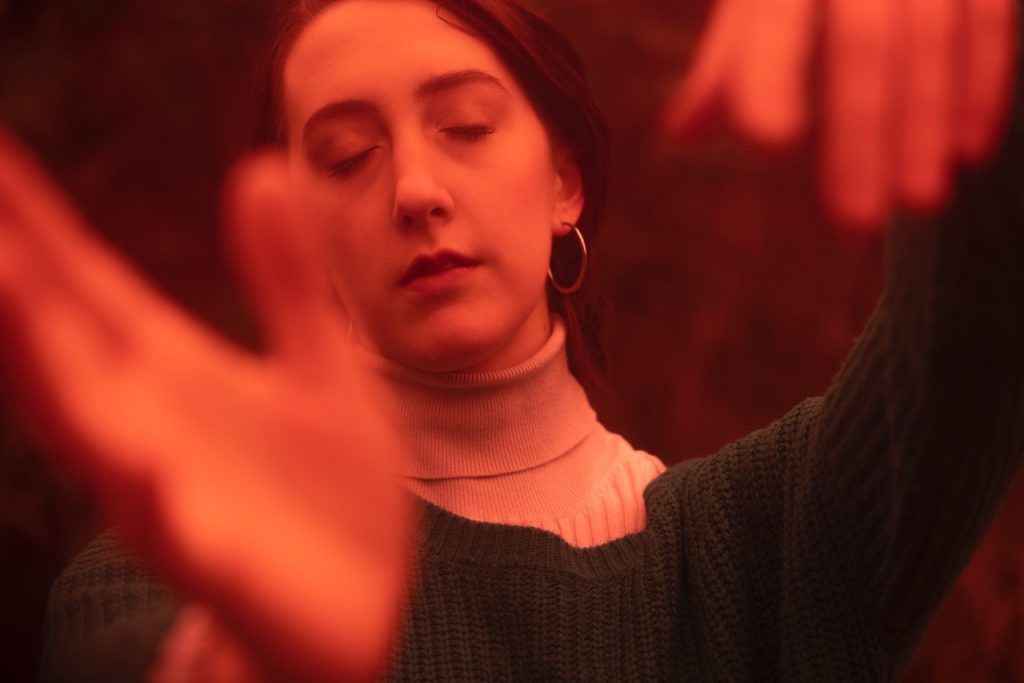
photo by Tilde Døssing
by Elenora Morris, contributing writer
The way I see it, there are two ways to approach dancing: outside-in, and inside-out. As a trained ballerina, I learned the outside-in way: here are the five positions, here is the correct shape for the arms. Drill and repeat, copy and paste, and in six or seven years, when you’ve wrestled your limbs into relative submission, we can see about the dancing part. But when a dear family friend asked me if I would please teach her how to dance, I hesitated. What if I didn’t teach her how to dance? What if I encouraged her, simply, to dance, and let the “how” develop on its own? What if I did the same thing myself?
When I was a professional ballet dancer, the directors and choreographers I worked with were like painters—they held the brushes and dictated the strokes—and I was the paint itself, molding my body into steps and counts, pouring the mortar of my soul into the scaffolding like color into a coloring book. Ballet taught me to crave rules, boundaries and the unique satisfaction found in knowing your role and filling it well. But such narrow structure can also become claustrophobic. After ten years of full-time ballet, I decided that I wanted to see what it felt like to hold the brush. My first blank canvas was my relationship to dancing itself.
How does my body want to move, if nobody tells me how? I started hanging out at social dance gatherings, read and studied Drs. Hillary McBride and Jamie Marich, danced down sidewalks and in my kitchen, and befriended many intuitive, passionate souls who practice dancing for fun. (Radical!) They taught me a new way of looking at movement, to value the experience over the outcome, to de-emphasize the prospect of who might be watching. Eventually, I pitched an idea to the local ballet school. Flow Space was born.
Do you think you have no sense of rhythm? Put your hand on your chest, and listen to what you find there. Before you take one step, your body is already dancing: flowing blood, sparking neurons, cycling breath in and out. Even the basic act of walking is a carefully coordinated give and take between two opposing halves, the most intimate partner dance of all. I dreamed of a space that harnessed this innate sense of flow—a space where all kinds of bodies could come to explore, experience and enjoy movement that comes naturally, from the inside out.
Most of us are taught to follow the rules first, and ask questions later, so dancing from the inside-out might initially feel frightening or awkward. It may take some practice to build trust with your body, just as it does to master a pirouette. But over time, the rewards of practicing “conscious dance” are endless, extending past the physical and into the emotional, social and spiritual. Dancing releases emotions, wards off depression, bonds us with our bodies and with each other.
To host Flow Space, I build a playlist of music, and begin with a breathing meditation, but after that, the class evolves where it wants to go. What inspires us to move our paintbrushes? I follow the flow of the room to explore and share what I feel in my own movements, a constantly welling sensory synesthesia of rhythms, images, and ideas. Each person in the room follows the curiosity and warmth that springs up naturally inside of his own chest. One day, it might feel really good to bounce. One day, we might sway with abandon, imagining ourselves to be leaves tossed by the wind.
All kinds of people come to Flow Space: creatives who want to explore their inner muse, thinkers who need a break from screens and office chairs. They tell me that they feel like a kid again, or that they released an emotion that had been stuck, or that they became newly aware of a pattern in their body. They leave feeling a little more creative, joyful, or resilient. During the class, I always pause to take in the people around me, fully engaged with their flow, and I experience a beautiful sense of quiet. Facilitating Flow Space has taught me about the value of planting a seed, and then letting go of control. Movement sprouts on its own. Beautiful things can emerge, when you let them.
I didn’t think I would fall in love with dance all over again, in a brand new way, after twenty years of practicing it the “right way.” But I love holding my own paintbrush, and I love giving others the chance to hold theirs too.
***
 ABOUT THE AUTHOR: Ellie grew up in Pittsburgh and performed abroad as a ballet dancer for a decade. She left the Royal Danish Ballet in 2022 to spend a year working on organic farms. She currently lives in Brooklyn where she teaches, attends music and dance jams, works with food and occasionally writes on Substack. She also runs the dance department at the annual Equinox Festival in Copenhagen. She recharges by going swimming or snuggling up with a good book and her cat, Phoebe.
ABOUT THE AUTHOR: Ellie grew up in Pittsburgh and performed abroad as a ballet dancer for a decade. She left the Royal Danish Ballet in 2022 to spend a year working on organic farms. She currently lives in Brooklyn where she teaches, attends music and dance jams, works with food and occasionally writes on Substack. She also runs the dance department at the annual Equinox Festival in Copenhagen. She recharges by going swimming or snuggling up with a good book and her cat, Phoebe.

